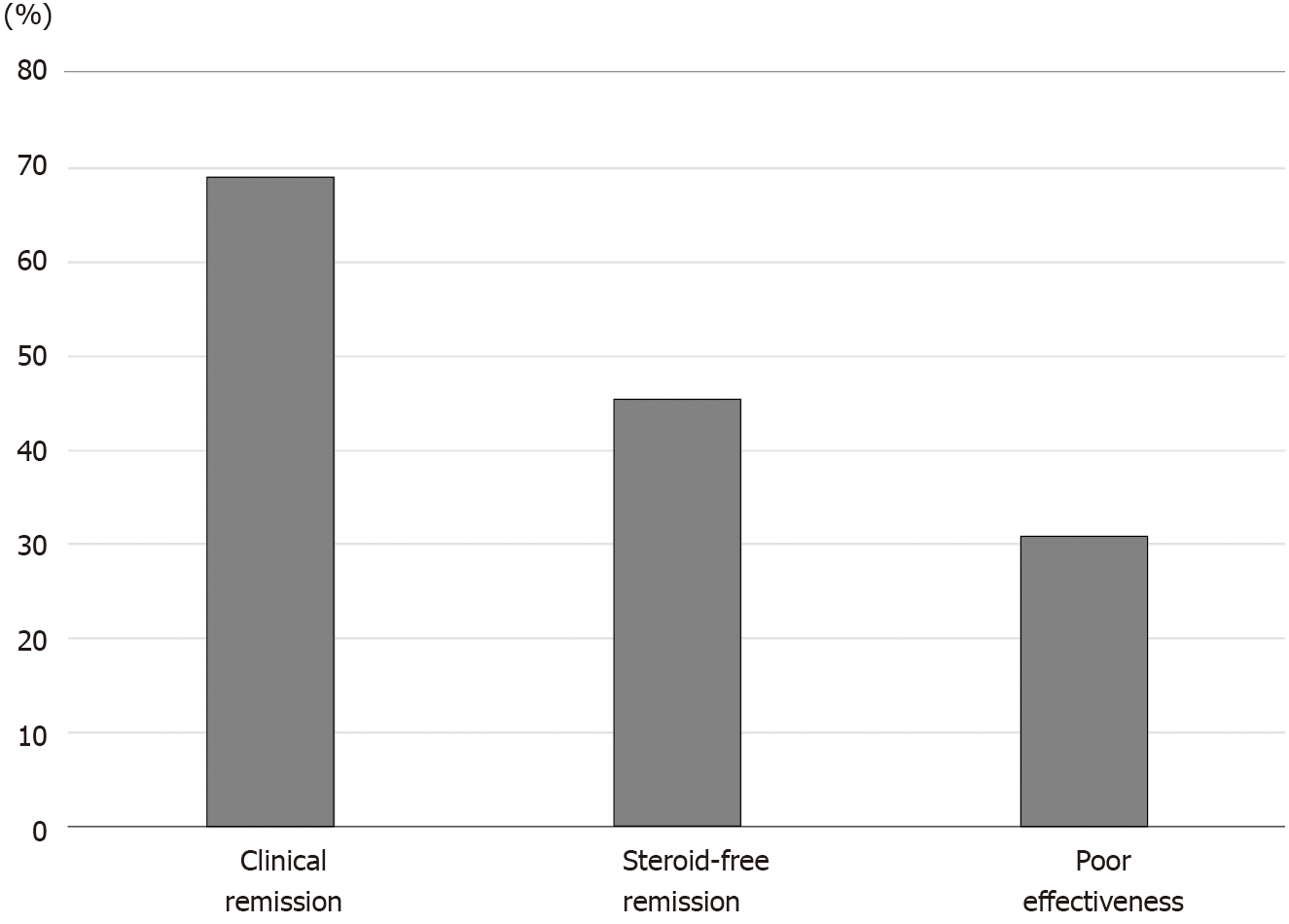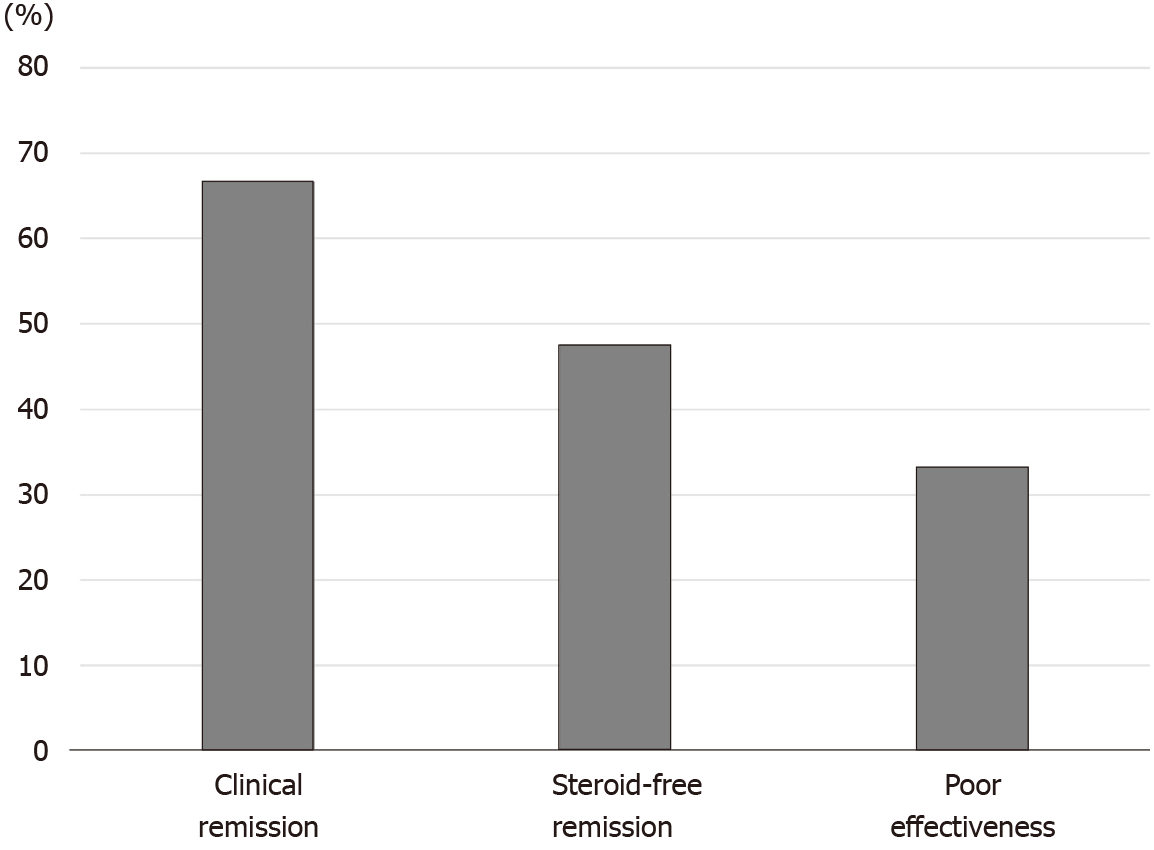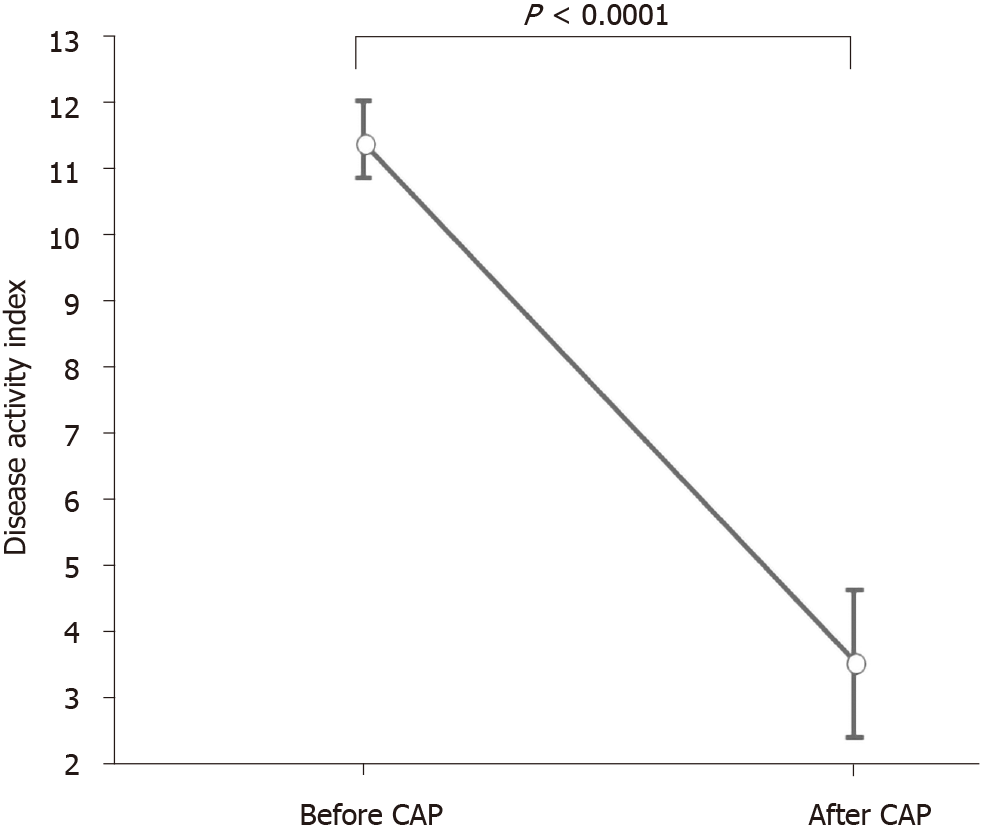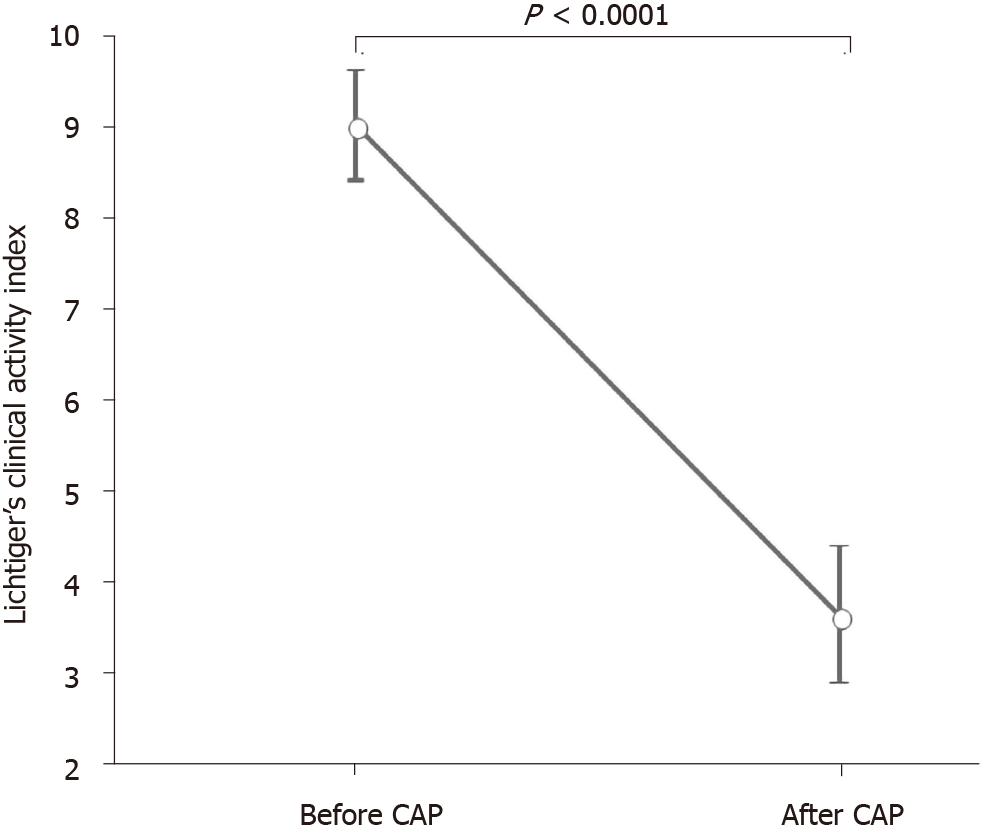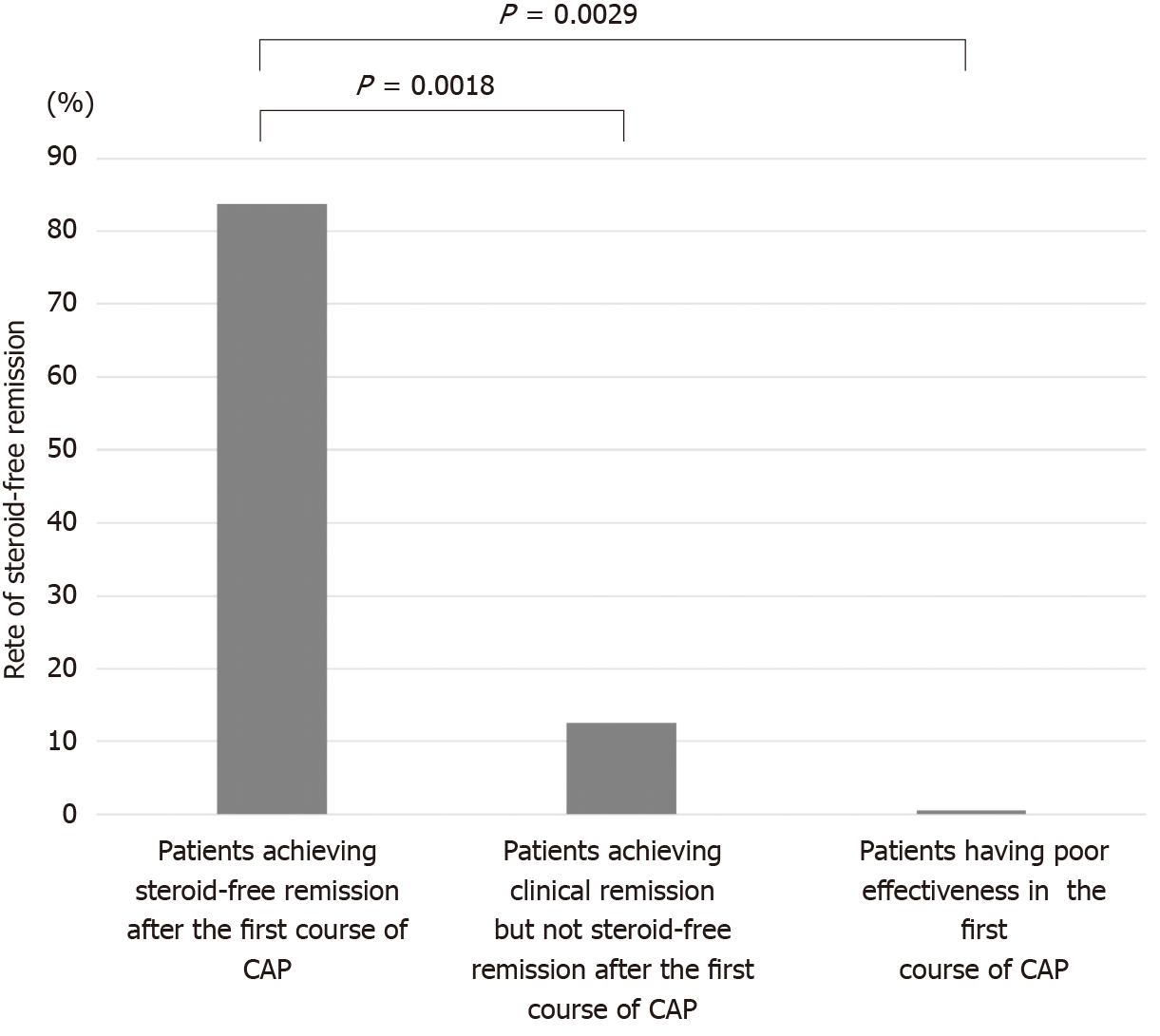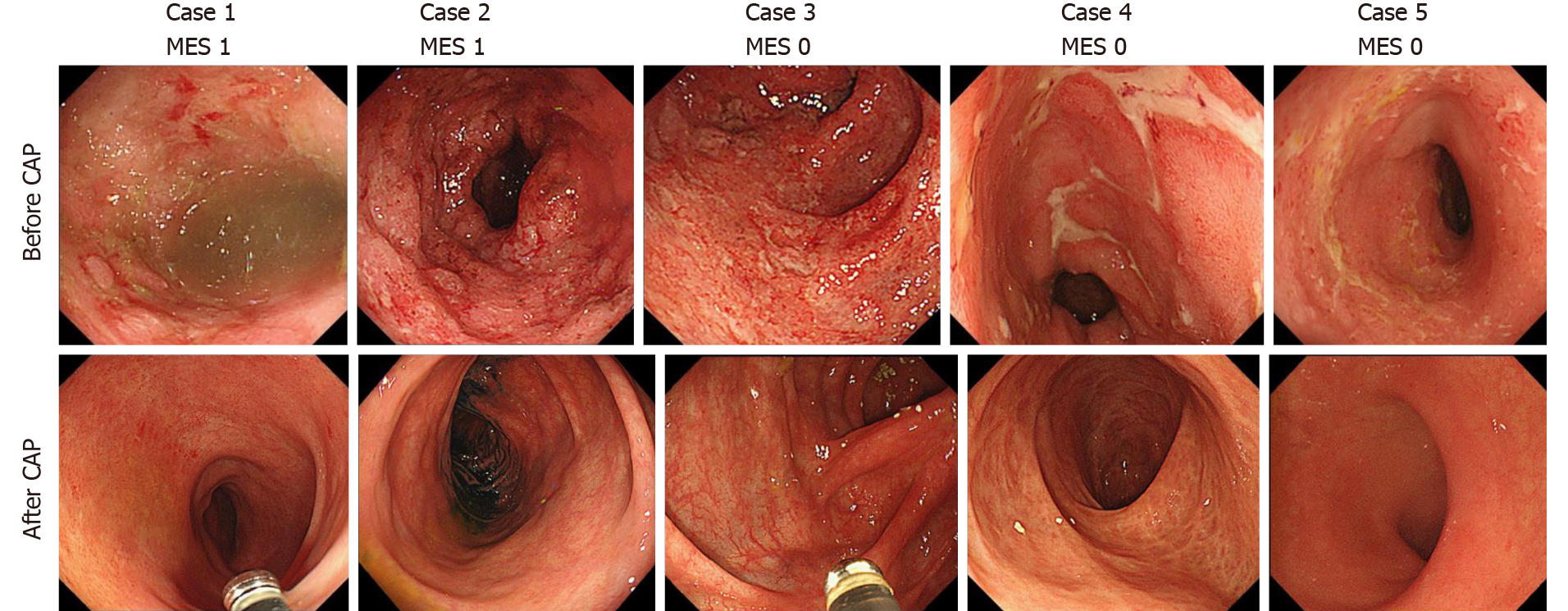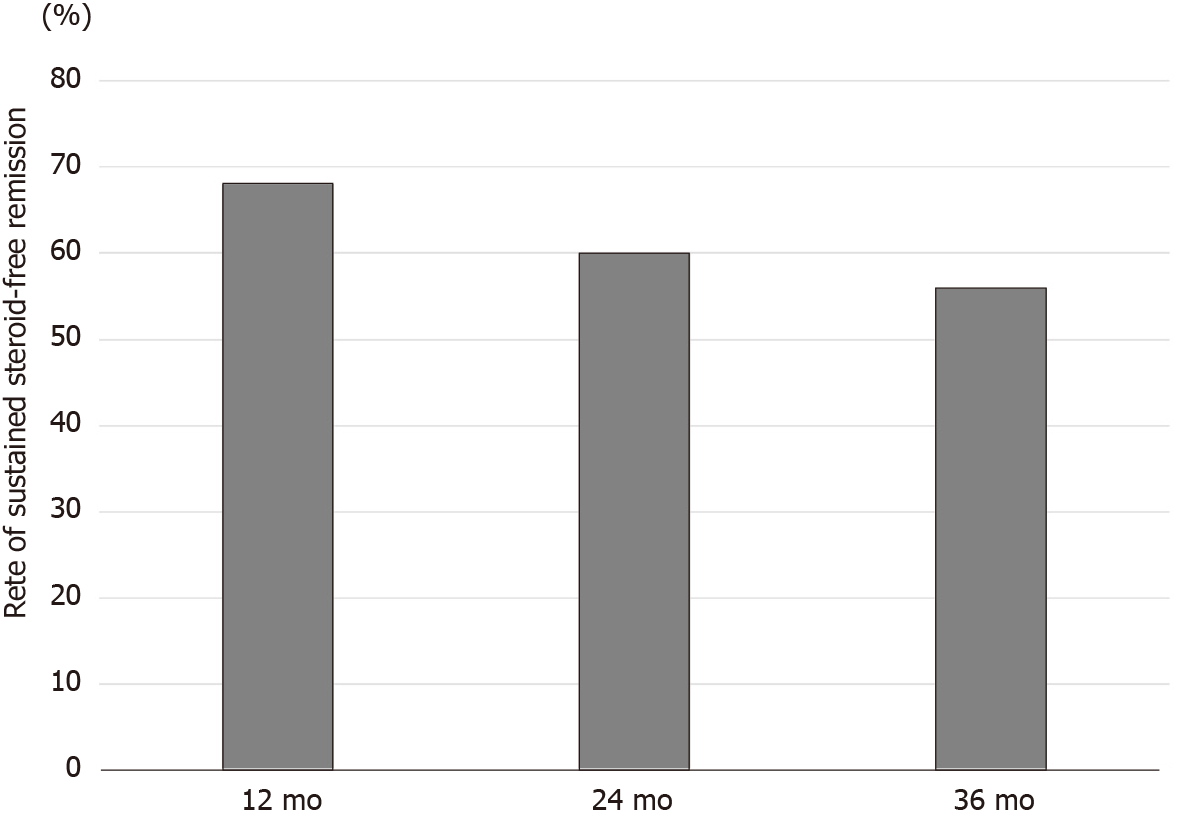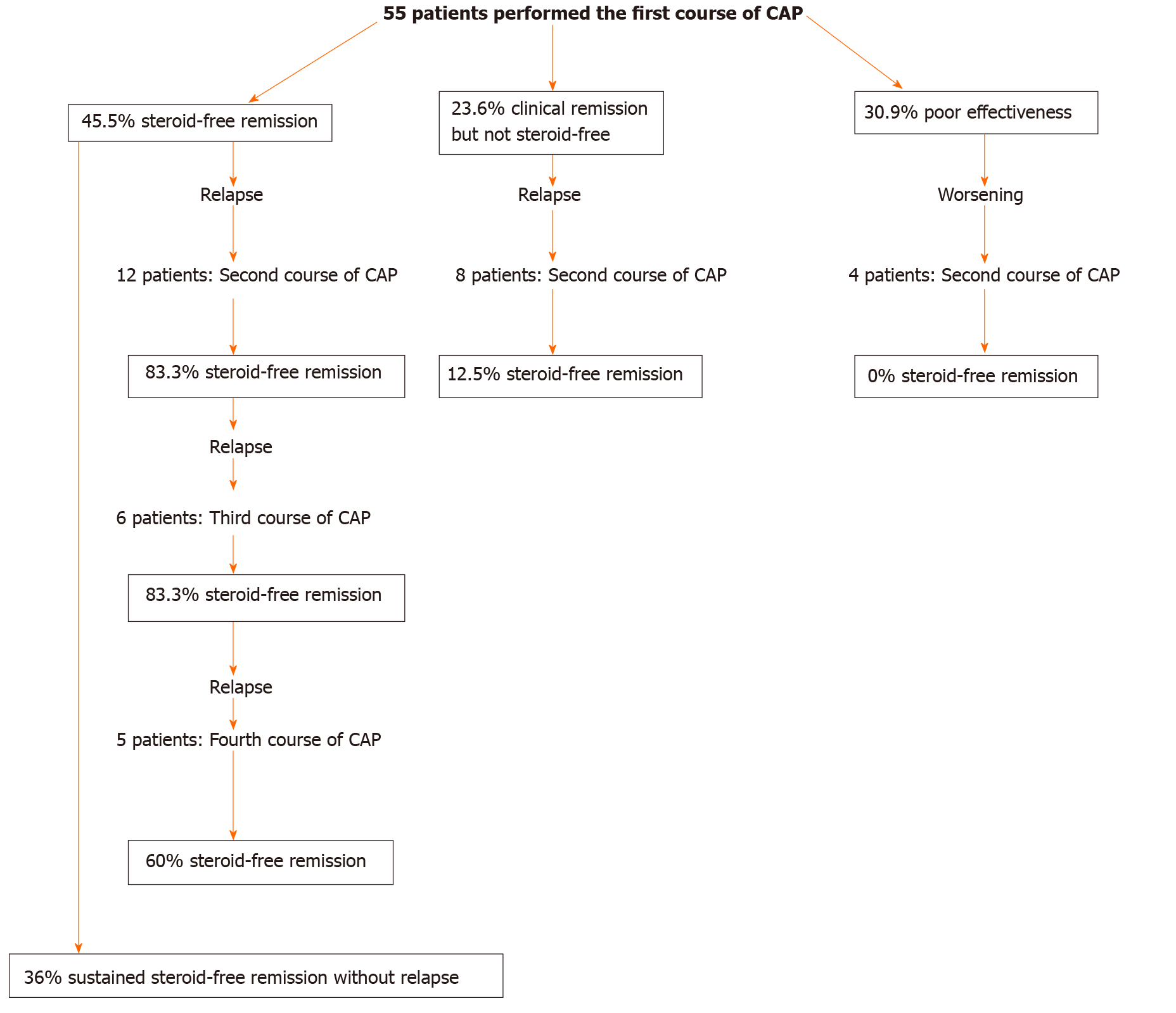Copyright
©The Author(s) 2021.
World J Gastroenterol. Mar 28, 2021; 27(12): 1194-1212
Published online Mar 28, 2021. doi: 10.3748/wjg.v27.i12.1194
Published online Mar 28, 2021. doi: 10.3748/wjg.v27.i12.1194
Figure 1 Efficacy of the first course of cytapheresis.
The rates of clinical remission, which includes steroid-free remission and clinical remission without steroid-free remission, steroid-free remission, and poor effectiveness after cytapheresis were 69.1%, 45.5%, and 30.9%, respectively.
Figure 2 Efficacy of the first course of cytapheresis in the patients with steroid-dependent ulcerative colitis.
The rates of clinical remission, steroid-free remission, and poor effectiveness after cytapheresis were 69.7%, 42.4%, and 30.3%, respectively.
Figure 3 Efficacy of the first course of cytapheresis in the patients with steroid-refractory ulcerative colitis.
The rates of clinical remission, steroid-free remission, and poor effectiveness after cytapheresis were 66.7%, 47.6%, and 33.3%, respectively.
Figure 4 Mean disease activity index score before and after cytapheresis.
Disease activity index score (mean ± SE) before and after cytapheresis is shown. The mean disease activity index score before cytapheresis was 11.4, which decreased significantly to 3.36 after treatment (P < 0.0001). CAP: Cytapheresis.
Figure 5 Mean Lichtiger’s clinical activity index score before and after cytapheresis.
Lichtiger’s clinical activity index score (mean ± SE) before and after cytapheresis is shown. The mean Lichtiger’s clinical activity index score before cytapheresis was 9.0, which decreased significantly to 3.63 after treatment (P < 0.0001). CAP: Cytapheresis.
Figure 6 The rates of steroid-free remission after the second course of cytapheresis.
The rate of steroid-free remission after the second course of cytapheresis (CAP) was significantly higher in patients who achieved steroid-free remission after the first course of CAP (83.3%) compared with that in patients who achieved clinical remission but not steroid-free remission after the first course of CAP (12.5%, P = 0.0018) and that in patients who had poor effectiveness after the first course of CAP (0%, P = 0.0029). CAP: Cytapheresis.
Figure 7 Rates of steroid-free remission after the second, third, and fourth courses of cytapheresis in patients who achieved steroid-free remission after the first course of cytapheresis.
The rates of steroid-free remission after the second, third, and fourth courses of cytapheresis in patients who achieved steroid-free remission after the first course of cytapheresis and then experienced relapses were 83.3%, 83.3%, 60%, respectively. CAP: Cytapheresis.
Figure 8 Endoscopic images of 5 patients who achieved steroid-free remission after the first course of cytapheresis.
Endoscopic images before and after the cytapheresis (CAP) therapy of 5 patients who achieved steroid-free remission after the first course of CAP are shown. Active inflammation (Mayo endoscopic subscore ≥ 2) was observed in the colonic mucosa in all 5 patients before the CAP therapy. On the contrary, mucosal healing (Mayo endoscopic subscore ≤ 1) was observed in all 5 patients after the CAP therapy. MES: Mayo endoscopic subscore; MES 1/MES 0: Mayo endoscopic subscore after cytapheresis; CAP: Cytapheresis.
Figure 9 Rates of sustained steroid-free remission at 12, 24, and 36 mo after the first course of cytapheresis in patients who achieved steroid-free remission after the first course of cytapheresis.
The rates of sustained steroid-free remission in patients who achieved steroid-free remission after the first course of cytapheresis were 68.0% at 12 mo, 60.0% at 24 mo, and 56.0% at 36 mo after the first course of cytapheresis.
Figure 10 Periods of sustained steroid-free remission and refractory type of the 9 patients who had maintained steroid-free remission throughout the observation periods.
Nine patients (36.0%) had maintained sustained steroid-free remission throughout the observation periods. Periods of sustained steroid-free remission of the 9 patients are shown in the figure. The mean period of maintained steroid-free remission of these 9 patients was 86.6 ± 14.3 mo (mean ± SE). Nine patients included 5 steroid-dependent patients and 4 steroid-refractory patients. Periods of sustained steroid-free remission of the 9 patients are shown in the figure. SR: Steroid-refractory patient; SD: Steroid-dependent patient.
Figure 11 Summary of the results of the study.
The results of this study are summarized in the figure. CAP: Cytapheresis.
- Citation: Iizuka M, Etou T, Shimodaira Y, Hatakeyama T, Sagara S. Cytapheresis re-induces high-rate steroid-free remission in patients with steroid-dependent and steroid-refractory ulcerative colitis. World J Gastroenterol 2021; 27(12): 1194-1212
- URL: https://www.wjgnet.com/1007-9327/full/v27/i12/1194.htm
- DOI: https://dx.doi.org/10.3748/wjg.v27.i12.1194









